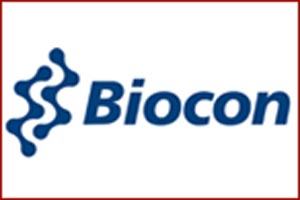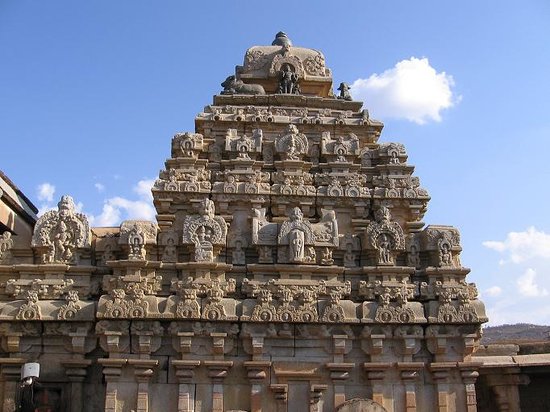
PROCESS FOR THE PREPARATION OF RANDOM POLYPEPTIDES AND EMPLOYING CIRCULAR DICHROISM AS A GUIDANCE TOOL FOR THE MANUFACTURE OF GLATIRAMER ACETATE (Fri, 26 Sep 2014)
CLICK read this at wipo
 OWNER
OWNERBANGALORE: Biotech major Biocon today said its Chairperson and Managing Director Kiran Mazumdar-Shaw


Glatiramer is a peptide based polymer composed of four amino acids: L-Glutamaic acid, L-Alanine, L-Tyrosine, and L-Lysine. It's pharmaceutically acceptable salt Glatiramer acetate is approved by FDA and marketed as Copaxone® for the treatment of multiple sclerosis. Copaxone is also known as copolymer-1 and cop-1. Multiple sclerosis is an autoimmune disease affects the brain and central nervous system due to the damage to the myelin sheath of the nerve cells, which results as demyelination of axons. Glatiramer acetate is a synthetic polypeptide analogue of myelin basic protein (MBP). Pharmacologically, Copaxone is a non-interferon and non-steroidal immunomodulator, which arrests the multiple sclerosis aggression. Glatiramer acetate is administrated by subcutaneous injections.
(Glu, Ala, Lys, Tyr)x.xCH3COOH
(C5H9NO4.C3H7NO2.C6H14N2O2.C9H11NO3)x.xC2H4O2
U.S. Pat. No. 3,849,550 describes the observation of MBP arrest in experimental allergic encephalomyelitis (a disease similar to multiple sclerosis) by immunotherapy agents. With continuous endeavours, glatiramer acetate is resulted as an advanced analogue for the treatment of multiple sclerosis with improved safety and efficacy.
U.S. Pat. Nos. 5,800,808; 5,981,589; 6,048,898 describes the process preparation of glatiramer acetate employing the N-carboxyanhydrides (NCAs) derived from alanine, γ-benzyl glutamate, N-trifluoroacetyl lysine, and tyrosine. Following the steps: polymerization, sequential cleavage of the γ-benzyl ester of glutamate and N∈-trifluoroacetyl derivative of lysine, acetate salt formation and final purification. U.S. Pat. No. 6,620,847 describes a process for the preparation of glatiramer acetate using the aqueous piperidine for trifluoroacetyl cleavage of lysine. U.S. Pat. No. 7,049,399 describes the process for preparation of polypeptide-1 using the catalytic transfer hydrogenation for the cleavage of γ-benzyl ester of glutamate. E.P. Pat. No. 1,807,467 describes the processes for preparation of glatiramer using NCAs of alanine, tyrosine, N-t-butoxycarbonyl L-Lysine, and protected glutamic acid, where in the protecting group is selected from γ-methoxybenzyl and γ-benzyl. U.S. Pat. No. 7,495,072 describes the process for the preparation of mixtures of polypeptides using purified hydrobromic acid. The major drawback of all these processes is the generation of impurities, multiple steps of purification and the variability in the secondary structures amongst different batches manufactured using the same process.
HO

-
-
Pharmaceutical Company
-
Address: Door No. A - 210, Gokul Arcade, Garevan Chowk, Sahar Road, Vile Parle East, Mumbai - 400057
Phone:022 6691 9761
Glatiramer is a peptide based polymer composed of four amino acids: L-Glutamaic acid, L-Alanine, L-Tyrosine, and L-Lysine. It's pharmaceutically acceptable salt Glatiramer acetate is approved by FDA and marketed as Copaxone® for the treatment of multiple sclerosis. Copaxone is also known as copolymer-1 and cop-1. Multiple sclerosis is an autoimmune disease affects the brain and central nervous system due to the damage to the myelin sheath of the nerve cells, which results as demyelination of axons. Glatiramer acetate is a synthetic polypeptide analogue of myelin basic protein (MBP). Pharmacologically, Copaxone is a non-interferon and non-steroidal immunomodulator, which arrests the multiple sclerosis aggression. Glatiramer acetate is administrated by subcutaneous injections.
|
U.S. Pat. No. 3,849,550 describes the observation of MBP arrest in experimental allergic encephalomyelitis (a disease similar to multiple sclerosis) by immunotherapy agents. With continuous endeavours, glatiramer acetate is resulted as an advanced analogue for the treatment of multiple sclerosis with improved safety and efficacy.
|
U.S. Pat. Nos. 5,800,808; 5,981,589; 6,048,898 describes the process preparation of glatiramer acetate employing the N-carboxyanhydrides (NCAs) derived from alanine, γ-benzyl glutamate, N-trifluoroacetyl lysine, and tyrosine. Following the steps: polymerization, sequential cleavage of the γ-benzyl ester of glutamate and N∈-trifluoroacetyl derivative of lysine, acetate salt formation and final purification. U.S. Pat. No. 6,620,847 describes a process for the preparation of glatiramer acetate using the aqueous piperidine for trifluoroacetyl cleavage of lysine. U.S. Pat. No. 7,049,399 describes the process for preparation of polypeptide-1 using the catalytic transfer hydrogenation for the cleavage of γ-benzyl ester of glutamate. E.P. Pat. No. 1,807,467 describes the processes for preparation of glatiramer using NCAs of alanine, tyrosine, N-t-butoxycarbonyl L-Lysine, and protected glutamic acid, where in the protecting group is selected from γ-methoxybenzyl and γ-benzyl. U.S. Pat. No. 7,495,072 describes the process for the preparation of mixtures of polypeptides using purified hydrobromic acid. The major drawback of all these processes is the generation of impurities, multiple steps of purification and the variability in the secondary structures amongst different batches manufactured using the same process.
HO
|
EXAMPLES
Example 1
Preparation of Glatiramer Acetate Using Potassium Tert Butoxide
Preparation of Protected Polymer 2
Protected copolymer (1 gm) was taken in a mixture of THF and water, to that Lewatit K 2629 resin (1 gm) was added and stirred at 65° C. for 24 h. The resin was filtered through buckner funnel and washed with THF (5 ml).The reaction mass was distilled to 3-4 volume stage and water was added and the precipitated product was filtered and dried in VTD for 24 h at 40-45° C. Yield: 0.6 gm
|
Preparation of Glatiramer Acetate
To the stirred solution of protected polymer 2 (0.6 g) in anhydrous methanol (9 ml) was added potassium tertiary butoxide (0.6 g) and stirred for 1 hour. Reaction mass was concentrated under reduced pressure (below 35□ C.). To the reaction mass water (0.6 mL) was added and pH was adjusted with Glacial acetic acid to 5.5. Crude glatiramer acetate was isolated by crystallising with acetone. Crystallised solid was filtered and suck dried. Yield: 0.4 g
|
Example 2
Preparation of Glatiramer Acetate Using Sodium Methoxide
Preparation of Protected Polymer 2
Protected copolymer (1 gm) was taken in a mixture of THF (8 ml) and water (ml), to that Lewatit K 2629 resin (1 gm) was added and stirred at 65° C. for 24 h. The resin was filtered through buckner funnel and washed with THF (5 ml).The reaction mass was distilled to 3-4 volume stage and water was added and the precipitated product was filtered and dried in VTD for 24 h at 40-45° C. Yield: 0.6 gm
|
Preparation of Glatiramer Acetate
To the stirred solution of protected polymer 2 (0.6 g) in anhydrous methanol (6 ml) was added a solution of sodium methoxide (0.9 g) in anhydrous methanol (4.5 mL)and stirred for 7 hours. Reaction mass was concentrated under reduced pressure (below 35° C.). To the reaction mass water (0.6 mL) was added and pH was adjusted with Glacial acetic acid to 6. Crude glatiramer acetate was isolated by crystallising with acetone. Crystallised solid was filtered and suck dried. Yield: 0.4 g
|
Example 3
Preparation of Glatiramer Acetate Using TMSCl/NaI Followed by Sodium Methoxide
Protected polymer 1 (20 g) was charged in THF (200 ml) under nitrogen atmosphere, added sodium iodide (1 g) was added followed by trimethylsilyl chloride (20 ml) at room temperature and stirred for 3 h. The reaction mass was quenched after the completion of reaction with water (20 ml). The solids were filtered, washed with water (100 ml) and dried under high vacuum to obtain protected copolymer 2 (10 g).
|
The resulted protected polymer 2 was suspended in anhydrous methanol (100 ml), solution of sodium methoxide (15 g)in anhydrous methanol (75 ml) was added and stirred at room temperature for 7 h. pH was adjusted after the completion of the reaction to 6 with glacial acetic acid, and the mass was purified to obtain glatiramer acetate (6 g).
|
Example 4
Preparation of Glatiramer Acetate from Protected Polymer 3
Solution of sodium methoxide (1.5 g) in anhydrous methanol (7.5 ml) was added to protected copolymer 3 (1 g) in anhydrous methanol (10 ml) at room temperature and stirred for 7 h. pH was adjusted to 5 after completion of the reaction with glacial acetic acid. The resulted mass was purified to obtain glatiramer acetate (0.6 g).
|
The Far UV CD spectra, of Glatiramer acetate synthesised using the processes described in examples 1-4 exhibits the presence of random coils in the wavelength region 195-215 nm and alpha helices in the wavelength region of 222 nm. (FIG. 5)
  
OWNER
BANGALORE: Biotech major Biocon today said its Chairperson and Managing Director Kiran Mazumdar-Shaw
 |
BENGALURU, INDIA,

 BULL TEMPLE
BULL TEMPLE


